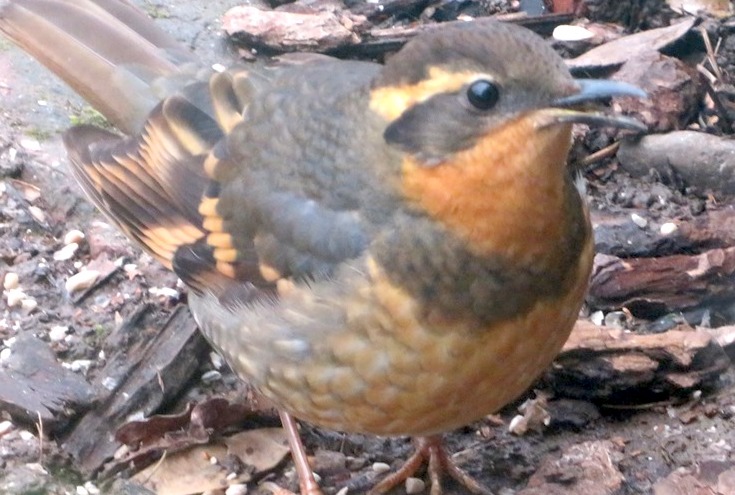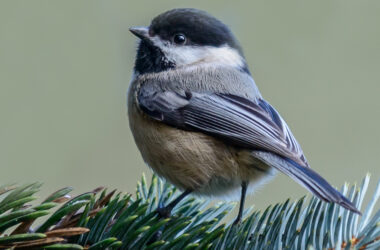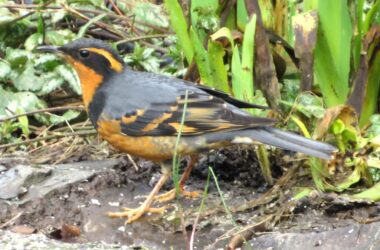The Varied Thrush can be common or absent depending on many variables.
In the Willamette Valley, the species generally arrives in fall and leaves in spring. But the schedule varies. Some years they will be abundant and in other years hard to find. Food supply, mountain snowfall, weather north and east of here all vary, making this a truly variable thrush.
If variety is a spice, this can be a spicy bird, indeed.
In 2022, I did not see a Varied Thrush in our south Salem garden until the second week of December. So last winter – nada. Now there are two –one male and one female. They are not a couple.
They will leave and breed in some dense forest this spring and summer. Right now, our Varied Thrush have been seen regularly (more than once per week) for 10 weeks. Previous sightings: one in late February 2021 and then another two weeks later. A varied and variable record, indeed.
Looking at a larger area around Salem, I checked 60 years of records for our Salem Christmas Bird Count. Of course, each year the number of counters and the weather is varied. The number of this bold orange and black bird varies, of course.
Nearly every year some are seen. But not always. In 1990, there was a record 203 counted. The count varies annually, no two years back-to-back match. The 2022 count: 19.
The thrush family has over 170 species across all continents except Antarctic. With its high-pitched and ventriloqual whistle, this bird has its own genus. No near cousins.
Other Oregon thrushes include the ubiquitous robin, Mountain and Western Bluebird, Townsend’s Solitaire, Hermit and Swainson’s Thrush. Most family members are omnivores who like fruit. Many are comfortable foraging on the ground though they nest above ground in trees or nest boxes.
This bird’s diet includes insects, especially in summer, such ag beetles, ants, caterpillars, crickets. This thrush also eats many millipedes, sowbugs, snails, earthworms, spiders, other invertebrates. Berries and wild fruits make up majority of winter diet but it will eat seeds and acorns.
The male Varied Thrush has a darker black and denser orange coloration than the female. She shares the same pattern, just a paler version. When Sibley published his first field guide to western bird, guess what was on the cover?
Breeding mostly in the Pacific coastal states and Canada, an occasional Varied Thrush will show up in the eastern U.S. When one shows up in the east, it causes a birder flurry – they flock like thrushes.
For information about upcoming Salem Audubon programs and activities, see www.salemaudubon.org, or Salem Audubon’s Facebook page.
Harry Fuller is an Oregon birder and natural history author of “Freeway Birding.” He is a member of the Salem Audubon Society. Contact him at [email protected] or atowhee.blog. His “Some Fascinating Things About Birds” column appears regularly in Salem Reporter.
SUBSCRIBE TO GET SALEM NEWS – We report on your community with care and depth, fairness and accuracy. Get local news that matters to you. Subscribe today to get our daily newsletters and more. Click I want to subscribe!

Harry Fuller is an Oregon birder and natural history author of three books: “Freeway Birding,” "Great Gray Owls of California, Oregon and Washington," and "San Francisco's Natural History--Sand Dunes to Streetcars." He leads birding trips for the Malheur Field Station. He is a member of the Salem Audubon Society, and leads bird trips locally. Harry has just published a new book, BIrding Harney County.









